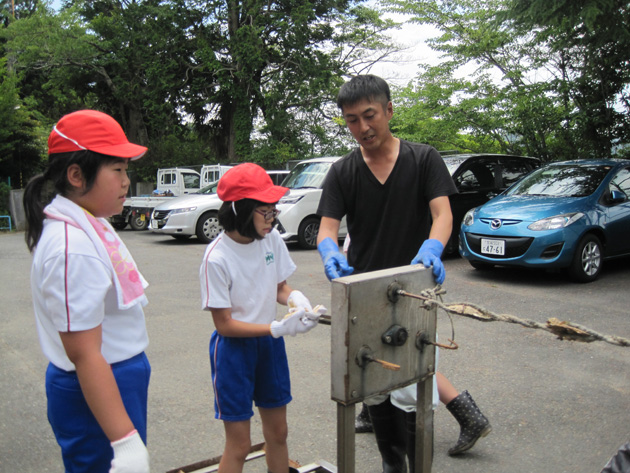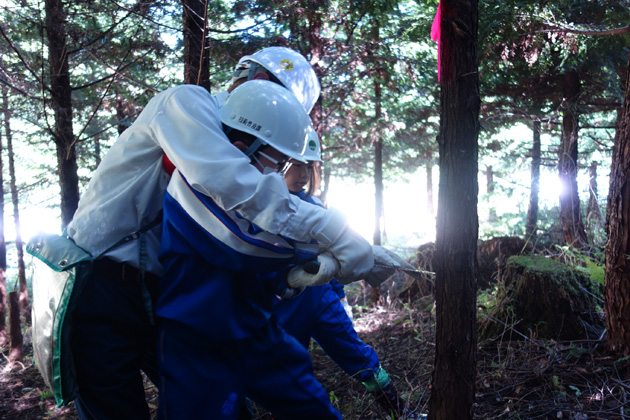eat
Children’s hometown building – “Oyster Farming Experience”
Ishinomaki Shiritsu Ohara Elementary School
http://www.city.ishinomaki.lg.jp/school/20304100/index.html
This initiative, which began in 1999, has thrived even after the Great East Japan Earthquake thanks to the support and cooperation of parents, guardians, and the regional community. The school aims to help nurture children, who will one day contribute to restoration, by providing a comprehensive education that includes a class on forestry where students are given an opportunity to experience every process of oyster farming, learn about food, and the bio-richness of the sea.
The Oshika Peninsula, where this school is situated, is known as the birthplace of oyster farming techniques. Its phytoplankton rich sea is an optimal location for oyster farming. The school’s oyster farming experience is offered to students in third grade and above as part of their comprehensive education. It is a unique educational program that the school began back in 1999 and has continued to offer for 18 years.
These classes are being taught by local oyster farmers, who together with the school, provide children the opportunity to learn about the rich nature of the region and from the wisdom and techniques of their forefathers. This region is also where Shinsho Miyagi, globally renowned “Oyster King,” spent time doing research and development, and these classes provide children an excellent opportunity to rediscover the things that make their region so great, feel inspired, and think about what they want to do with their lives.
Students in third and fourth grade experience creating what is known as a “karakosashi,” which involves piercing and stringing together scallop shells that become beds for oyster larvae. Students in fifth and sixth grade help with “tanebasami,” which means to sandwich the scallop shells with 20~30 baby oysters (seed oysters) between 2 twisted ropes using a machine spun manually, used in the region from long ago. Then the seed oysters are placed on the aquaculture shelves in front of the school. The oysters spend 2 years growing on plankton. Then in February, 2-year old oysters are harvested, and the students have a go at shucking oysters. At the oyster processing plant, they learn about the efforts and ingenuity that goes into safely delivering oysters to consumers.
Each year, harvested oysters are transformed into local cuisine, “kakijiru” (oyster soup), which is served to people in the community at the “Furusato Gakushu Happyoukai,” an event during which children present their findings/learnings about their hometown. At the event, children also pass out rice cakes to express their appreciation for traditional arts, the harvest, and nature’s bounty. Moreover, third and fourth grade students work with the Ministry of Agriculture, Forestry and Fisheries and the Tohoku Regional Forest Office Miyagi Hokubu Forest Management Division to help thin national forests near the school to learn about how the rain soaks up nutrients from the forest and carries it down to the sea. The children spend 4 years forging relationships with the local community and systematically learning about the rich bounty from the ocean and the mountains.
更新日:2017.12.27 ※記事の内容は投稿当時のものです











